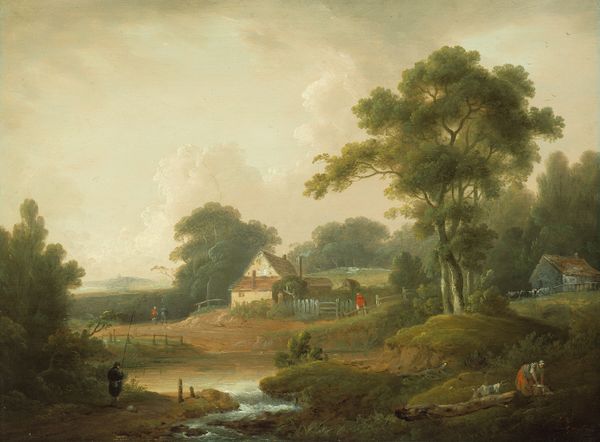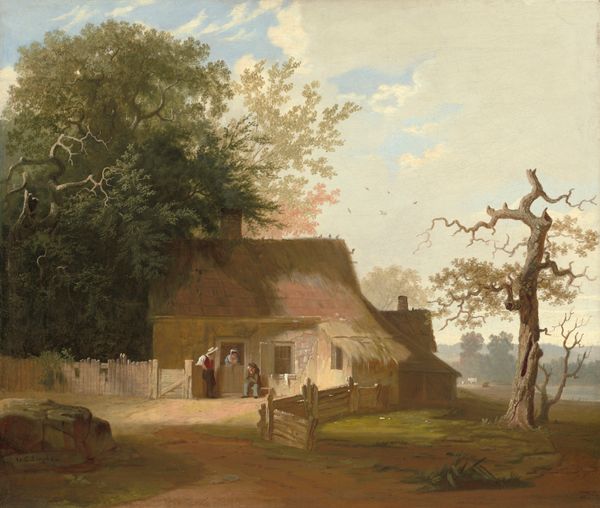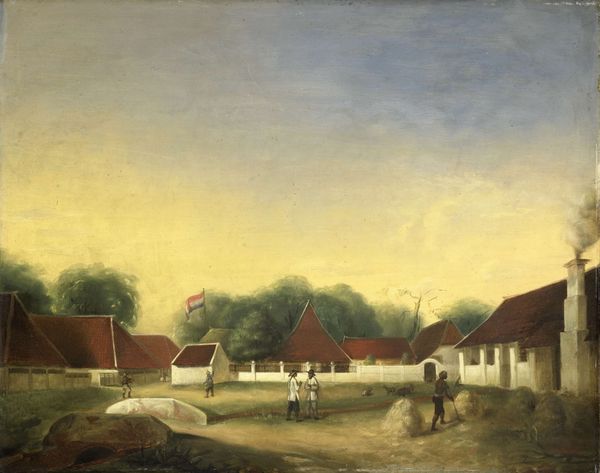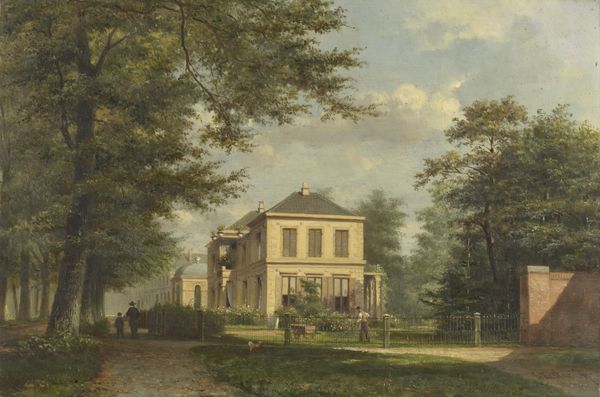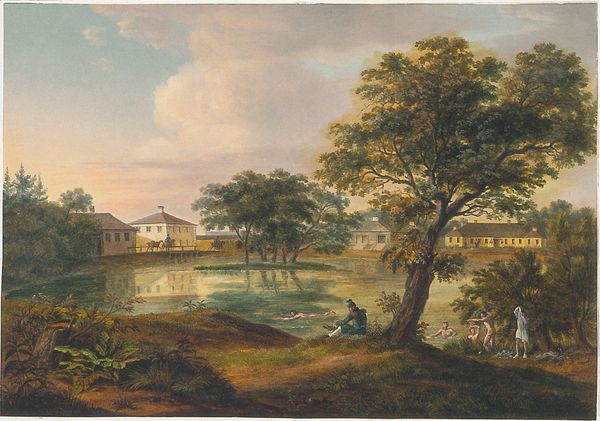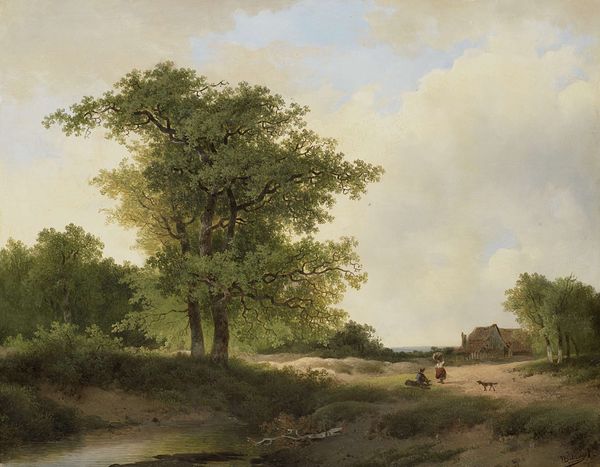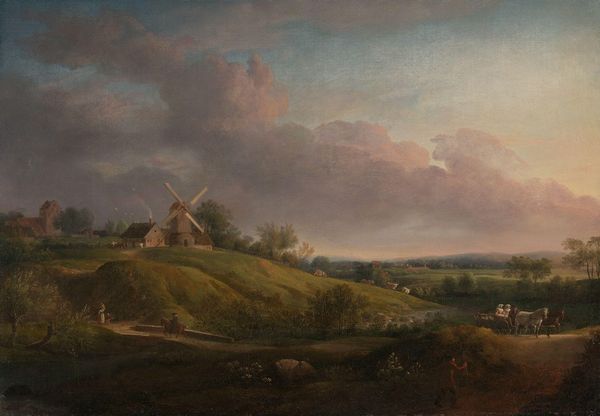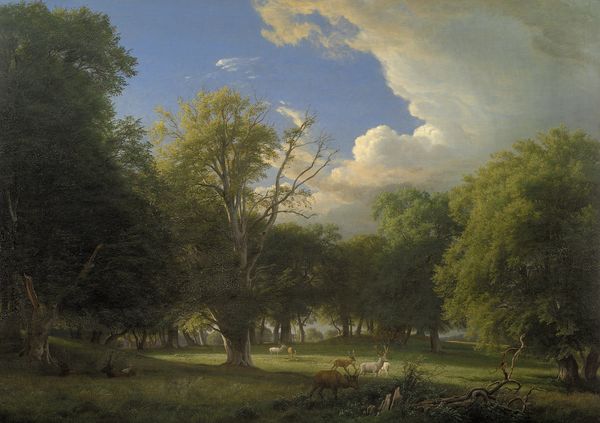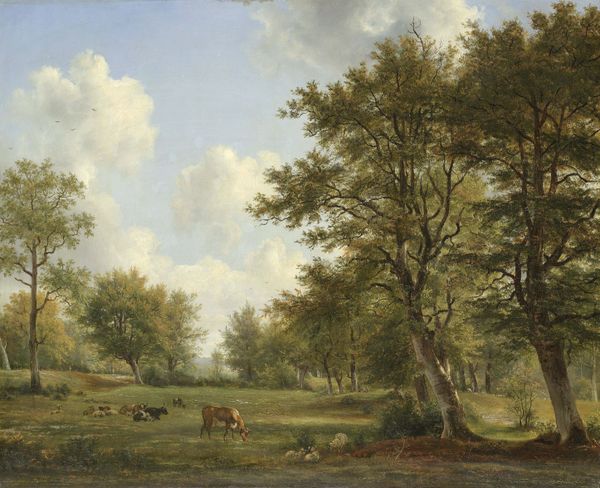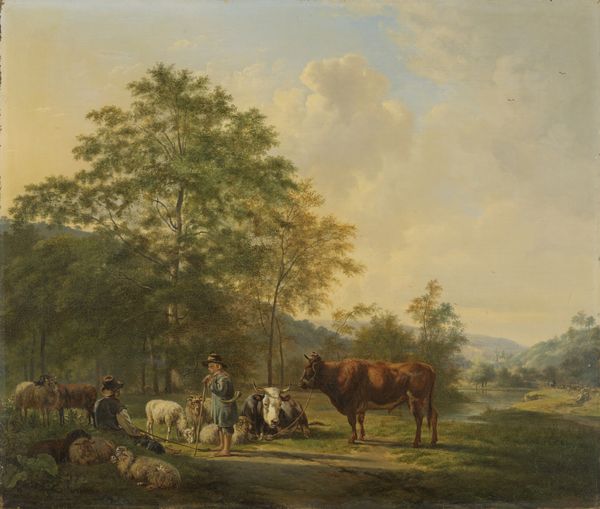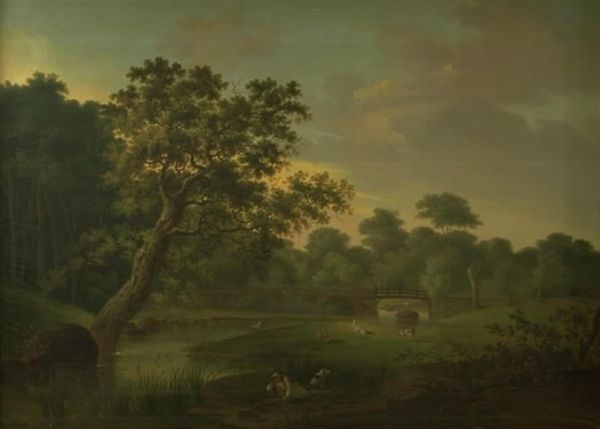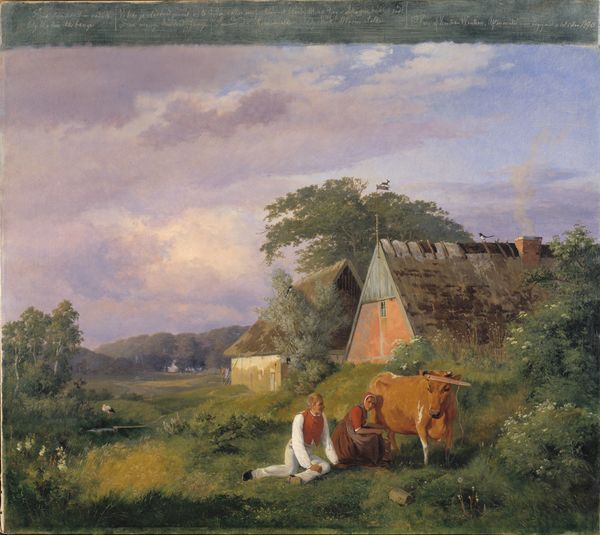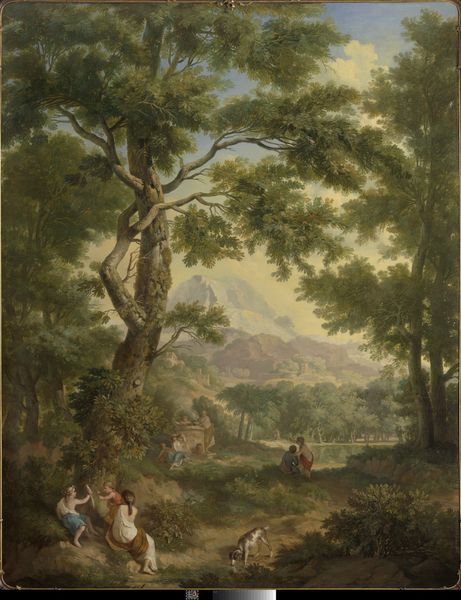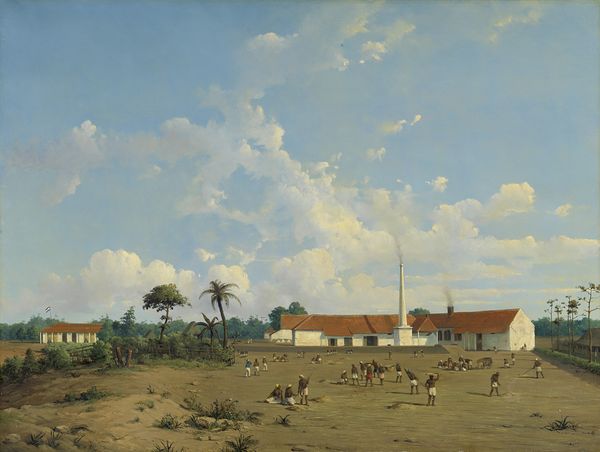
View of the house of the resident, Mr. J. Ph. van Zuylen van Nyevelt, in Banyuwangi (East Java) 1828
0:00
0:00
painting, plein-air, oil-paint
#
painting
#
plein-air
#
oil-paint
#
landscape
#
romanticism
#
orientalism
#
cityscape
#
realism
Dimensions: height 53 cm, width 65 cm, depth 9.8 cm
Copyright: Rijks Museum: Open Domain
Antoine Payen's canvas depicts the residence of Mr. van Zuylen van Nyevelt in Banyuwangi, presenting us with a landscape imbued with cultural tension. The colonial house, meticulously rendered, stands as a clear symbol of European power and order imposed on the Javanese landscape. Note the figures in the foreground, their gestures of greeting or deference laden with the weight of colonial interaction. Such gestures echo across time, reminiscent of Roman supplication, yet here, they are recontextualized within a system of domination. The tree, a recurring motif across cultures as a symbol of life and connection to the earth, is here dwarfed by the geometric architecture of the house. Consider how these symbols—the house, the tree, the gestures—interact, conveying the psychological landscape of colonization. Just as in dreams, the interplay of symbols in art can evoke deep, often subconscious, responses. The reappearance of these symbols across epochs reveals the persistent human need to negotiate power and place. They are continually reborn, each time reflecting the anxieties and aspirations of a new age.
Comments
No comments
Be the first to comment and join the conversation on the ultimate creative platform.
